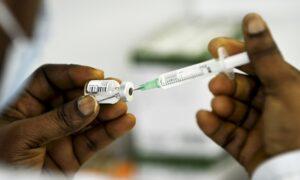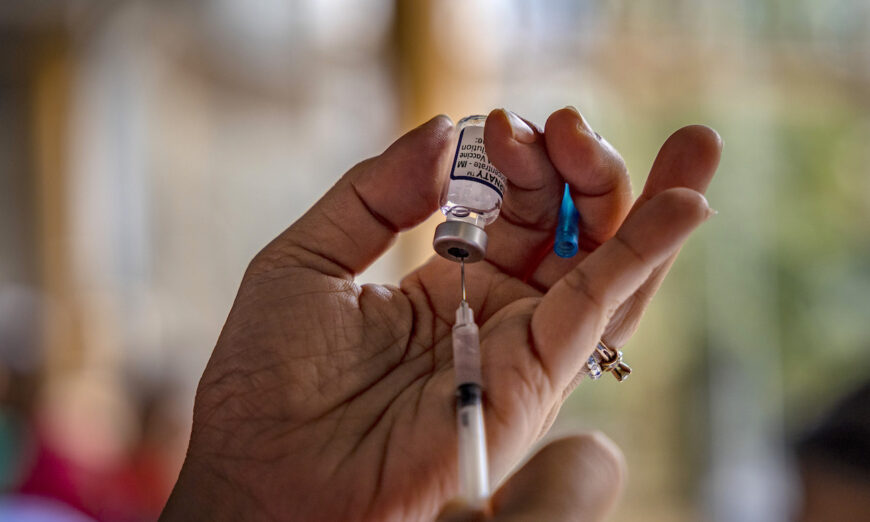European Regulator Confirms Pfizer Did Not Highlight DNA Sequence in COVID-19 Vaccine
Regulator claims fragments left by sequence are at acceptable levels.
Pfizer did not highlight a DNA sequence in its COVID-19 vaccine, a European regulator has confirmed.
“While the full DNA sequence of the plasmid starting material was provided in the initial marketing authorization application for Comirnaty, the applicant did not specifically highlight the SV40 sequence,” the European Medicines Agency (EMA) told The Epoch Times in an email.
Pfizer and its partner, BioNTech, have not responded to requests for comment.
Pfizer did not highlight the inclusion of the enhancer in its vaccine because “it was considered to be a non-functional part of the plasmid,” EMA said. “They have since clarified this information in response to questions raised by EMA.”
The EMA said parts of the SV40 sequence are “commonly present in plasmids used for manufacturing of biological active substances,” but neither authorities nor Pfizer have been able to say why the sequence was made part of the Pfizer shot.
Contested Claims
According to the EMA, the DNA sequences, including the SV40 sequence, are “broken down and removed” during the manufacturing process.
“Fragments of the SV40 sequence may only be present as residual impurities at very low levels that are routinely controlled,” the EMA claimed.
The agency did not provide any evidence to support the claim.
“The best independent estimates are 100-200B fragments of the plasmid exist in each dose,” Kevin McKernan a microbiologist who first identified the sequence in the vaccine, told The Epoch Times in an email. “The EMA has offered no scientific evidence to make such a claim other than ‘Trust our non-peer reviewed heavily redacted failure in transparency.'”
An EMA spokesperson said earlier this year that there was “no evidence to indicate the presence of SV40 … in the formulation of COVID-19 vaccines.”
The EMA is now acknowledging that statement was not correct.
But the regulator said it “has seen no evidence of an association between mRNA vaccines and adverse events that could be linked to the presence of DNA material, nor are we aware of any scientific evidence showing that the very small amounts of residual DNA that may be present in vaccine batches could integrate into the DNA of vaccinated individuals.”
It also said, “we have not seen any reliable evidence of residual DNA exceeding approved/safe levels for” the Pfizer vaccine.
Dr. Malone said that the standards they’re citing were not designed for the Pfizer and Moderna vaccines, which use modified messenger ribonucleic acid (RNA) technology.
“The safe threshold in the presence of these delivery complexes is something that must be established experimentally by performing genotoxicity studies,” Dr. Malone said. “To say that just because we haven’t detected it, or it’s below the level that we normally accept with, say a flu vaccine, is completely irrelevant.”
Fragments Act as Mutagens?
Some scientists say they’re concerned because the DNA fragments could act as mutagens, or change the DNA sequence in a gene, even when taking into account how the SV40 sequence in the vaccine is not the cancer-causing large T antigen.
“The thing is that the smaller pieces actually could be very significant,” David Wiseman, a former Johnson & Johnson scientist, told The Epoch Times. “They could actually get into your genome, potentially.”
Patrick Provost, a professor in the Department of Microbiology, Infectious Diseases, and Immunology at the Faculty of Medicine at Laval University, told The Epoch Times that the danger of the SV40 enhancer being present in the vaccine is its possible integration into a cell’s DNA genome.
“All it takes is a single integration at the wrong place in a single cell to initiate a cancerous process and kill a person,” he said.
Responding to those concerns, the EMA said that “there is no scientific evidence that any of these SV40 fragments can act as insertional mutagens.”
Dr. Malone said that was not true.
“Short DNA fragments and oligonucleotides are specifically used in modern biomedical research to experimentally alter the genomes of cells and embryos,” he wrote in an email. “Such DNA fragments are well known to those skilled in the art to be useful for altering genomic information and genome integrity via both recombination and insertional mutagenesis.”
“Given the EMA waived all genotoxicity studies, their statement is nothing more than complicit wishful thinking,” Mr. McKernan said.
Matthew Horwood contributed to this report.
This article has been archived for your research. The original version from Epoch Times can be found here.






